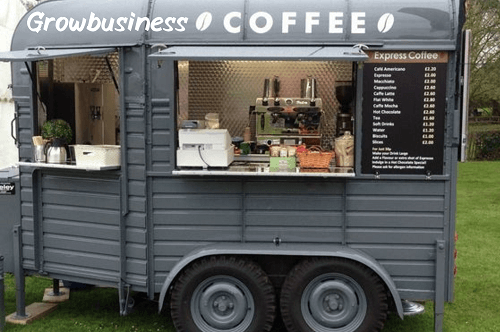Starting a Coffee Cart Business: A Step-by-Step Guide
Business:
A coffee cart business remains one of the best entrepreneurial ventures that any individual in love with coffee may use for an entry point into the food and beverage industry without breaking the bank and the freedom to be flexible. The unique and scalable way to reach customers will be places like office parks, markets, festivals, and events. The portable nature of a coffee cart allows the owners to find locations where the demand is higher. Thus, overhead costs associated with a more traditional brick-and-mortar cafe are reduced. Here, we will discuss some of the critical steps in establishing a coffee cart business, equipment, permits, and success tips. We will also answer five frequently asked questions about the business.

Background of the Coffee Cart Business:
Business:
A coffee cart is a mobile coffee station that offers espresso, cappuccino, latte, and iced coffee. They are usually small, easy to move, and not too complicated, so business owners can use them to offer coffee in busy locations without all the costs and complications associated with running a traditional coffee shop.
This coffee cart business can be very profitable, as coffee is one of the most consumed beverages worldwide. A mobile cart gives you access to a wide variety of customer bases: travelers, students, event attendees, office workers, and more. It also gives you the flexibility to adjust your location and service hours based on demand.
How to Start a Coffee Cart Business:
Business:
Step 1: Market Research
First, do your market research to understand your target customers, the best locations for your cart, and the competition. Find busy areas such as business districts, schools, or tourist attractions. Understand what your customers want so you can prepare your menu accordingly.
Step 2: Plan Your Menu and Pricing
Your menu will be local tastes, some common coffee drinks, and maybe something a little different to edge ahead of the competition. Pastry, snacks, or other non-coffee beverages such as smoothies or teas can add to more customers. Competitive yet profitable, your pricing is determined by your overheads: supplies, equipment, and labor.
Step 3: Obtain the Necessary Equipment
Operating a coffee cart requires specific equipment for good service and efficiency. These include:
- Espresso machine: The heart of every coffee cart. A compact machine of good quality is needed to handle large volumes.
- Grinder: Ground coffee beans are crucial in delivering good flavor.
- Milk frother: Needed for latte and cappuccino preparation.
- Refrigeration: To store perishables and milk and creamers.
- Portable cart or kiosk: You can either buy a pre-built cart or build one yourself according to your requirements
- Supplies: Coffee beans, cups, lids, napkins, syrups, etc.
Step 4: Obtain Licenses and Permits
A coffee cart is a food service business so you will need to observe the local health ordinances. You will need to acquire permits for food handling and also have your business checked out, perhaps to gain some sort of license to work as a mobile food vendor. Again, the specifics of this will vary with location so contact your local government and health departments and find out what you’ll need to comply with.
Step 5: Branding and Marketing
A strong brand identity is important to attract customers. Design an attractive logo, create business cards, and develop a social media presence to connect with your audience. Special promotions, loyalty programs, and partnerships with nearby businesses can help build a loyal customer base. Word of mouth, especially in areas where people frequent regularly, can also work wonders.
Step 6: Launch and Adjust
After securing all your resources and permits, your coffee cart is ready. Begin by serving in visibly high-traffic locations and be prepared to change your strategy based on customer feedback, operational challenges, and changing seasonal demand.
Recommendations for Success in the Business of Coffee Carts:
Business:

The right location is a vital success factor for your coffee cart. Try and go for areas that are destined to have a lot of foot movement like around offices, universities, or any other events.
- Consistency of quality: Quality brings customers back time after time. Invest in good gear. Use premium beans. Train all baristas.
- Customer experience: Good customer service is important. Friendly and timely service inspires repeat business and great word-of-mouth.
- Flexibility: One of the benefits of a coffee cart is that it can be very flexible. Be prepared to relocate depending on demand and other events happening in your location.
- Cost control: Track costs of ingredients, equipment maintenance, and licensing fees to ensure that your is profitable.
Frequently Asked Questions (FAQs):
Business:
1. How much does it cost to start a coffee cart business?
It’s really wide in terms of the range depending on where you are, the kind of equipment you have, and what your cart design is going to be. You can think of an average being between $10,000 and $30,000 that covers everything, like your cart, your espresso machine, your supplies, permits, and some initial marketing. If you are using a custom-built car or premium equipment, then your costs may run a little higher.
2. Can I run a location-free coffee cart?
Yes. Of the big advantages of a coffee cart, mobility is, and you can be situated in a different location depending on your demand, from a business district to festivals or to a private event. Of course, you should research permits specific to mobile vendors.
3. How do I price my coffee drinks?
The pricing will consider the cost of ingredients, overheads, like permits, insurance, and maintenance on the cart, and the market rate in the locality. Conduct a competitive analysis of similar vendors in your locality to establish a price range that you are comfortable with. Also, your price must have a sustainable profit margin.
4. Do I need staff for my coffee cart?
This is based on the size of your business. You may have a small coffee cart to be operated on your own, but when it expands, you will need to hire more baristas and customer service personnel to serve a larger number of customers, especially at peak times.
5. What are the most probable problems you will encounter in operating a coffee cart?
Typically, among these are weather problems – dealing with outdoor operations, managing equipment, inventory management, health and safety regulations, and competition can sometimes be really aggressive so good service and great products really do matter to become at the top.
Conclusion:
Business:

This is an opportunity for those who love coffee and are also interested in entrepreneurship. The overhead is relatively low and it is possible to relocate to another location. This is one of the good options for a new owner. Understand the market, find the right team, and provide a great customer experience. You will build a successful and long-term coffee cart business.
